10 Destructive Rose Pests To Look Out For – Plus Natural Treatments For An Organic Garden
Beware these common rose pests and learn about natural ways to control them without harming the biodiversity of your garden.
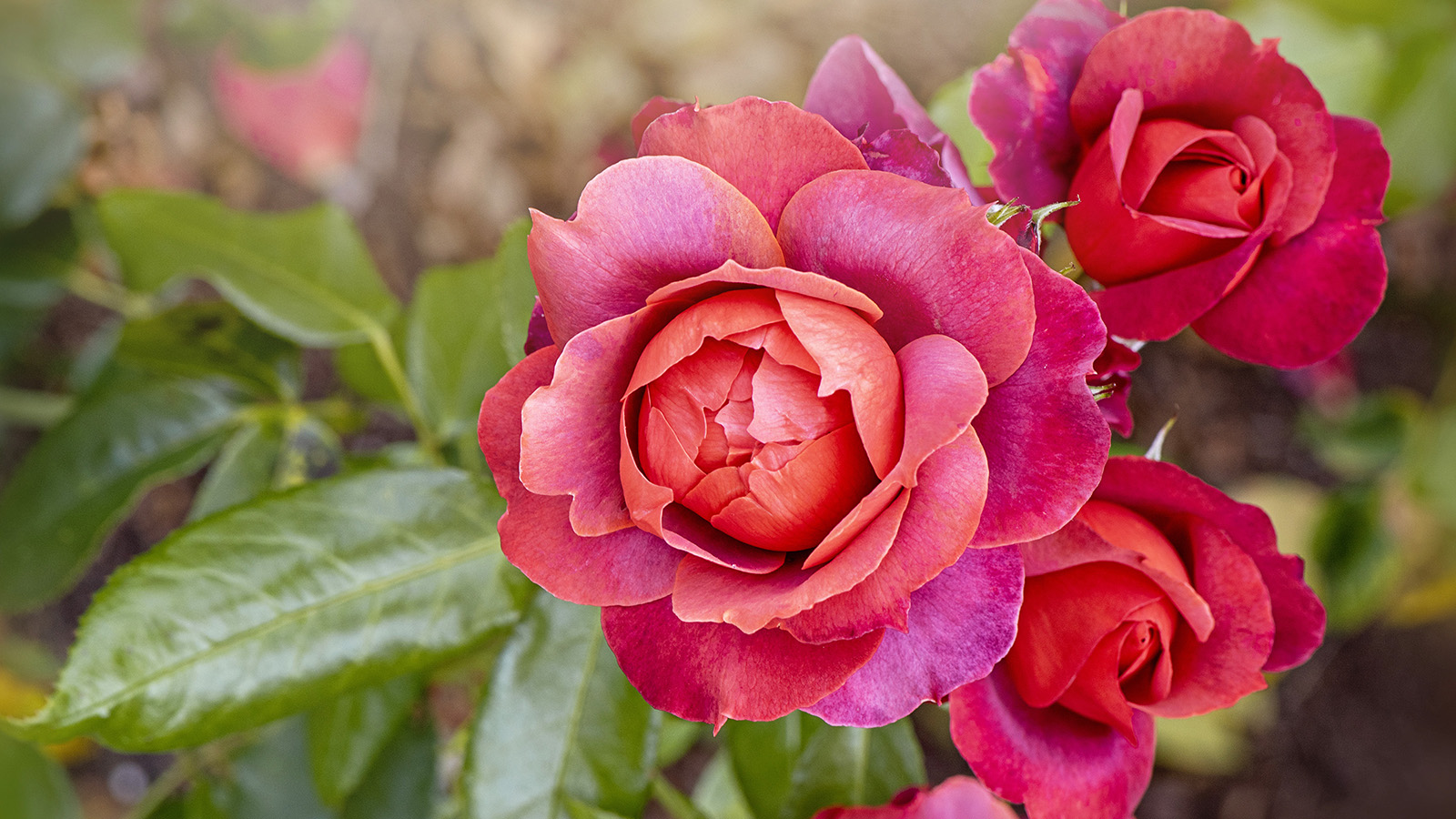

Melanie Griffiths
Roses are favorites in the garden for their stunning blooms and intoxicating fragrance. Unfortunately, the shrubs have developed a reputation for being difficult to grow. There is some truth to this, but most gardeners find that the effort put into keeping roses happy is well worth the rewards.
When starting a rose garden, one of the issues you are likely to face is pests. Several types of pests target roses – and some are more serious than others. This list of the most common rose pests will help you identify the culprit and use the most natural solution to combat it.
Avoiding chemical pesticides is one of the things expert rose growers always do to grow the best flowers. They will kill the pest but also harm beneficial insects and soil micro-organisms, vital to the plant's health.
Natural products such as neem oil are highly effective. However, do not apply treatments while pollinators and other beneficial insects are visiting the plant, as you could kill them. As these insects do not chew plants, it is safe to apply when they are not in close proximity.
Keep an eye on your plants for early signs of problems, which are much easier to manage than heavy infestations. Thankfully, roses are hardy shrubs that can bounce back from a certain amount of damage. If your plant has lost its vitality, there are steps you can take to save a rose that is underperforming.
1. Aphids
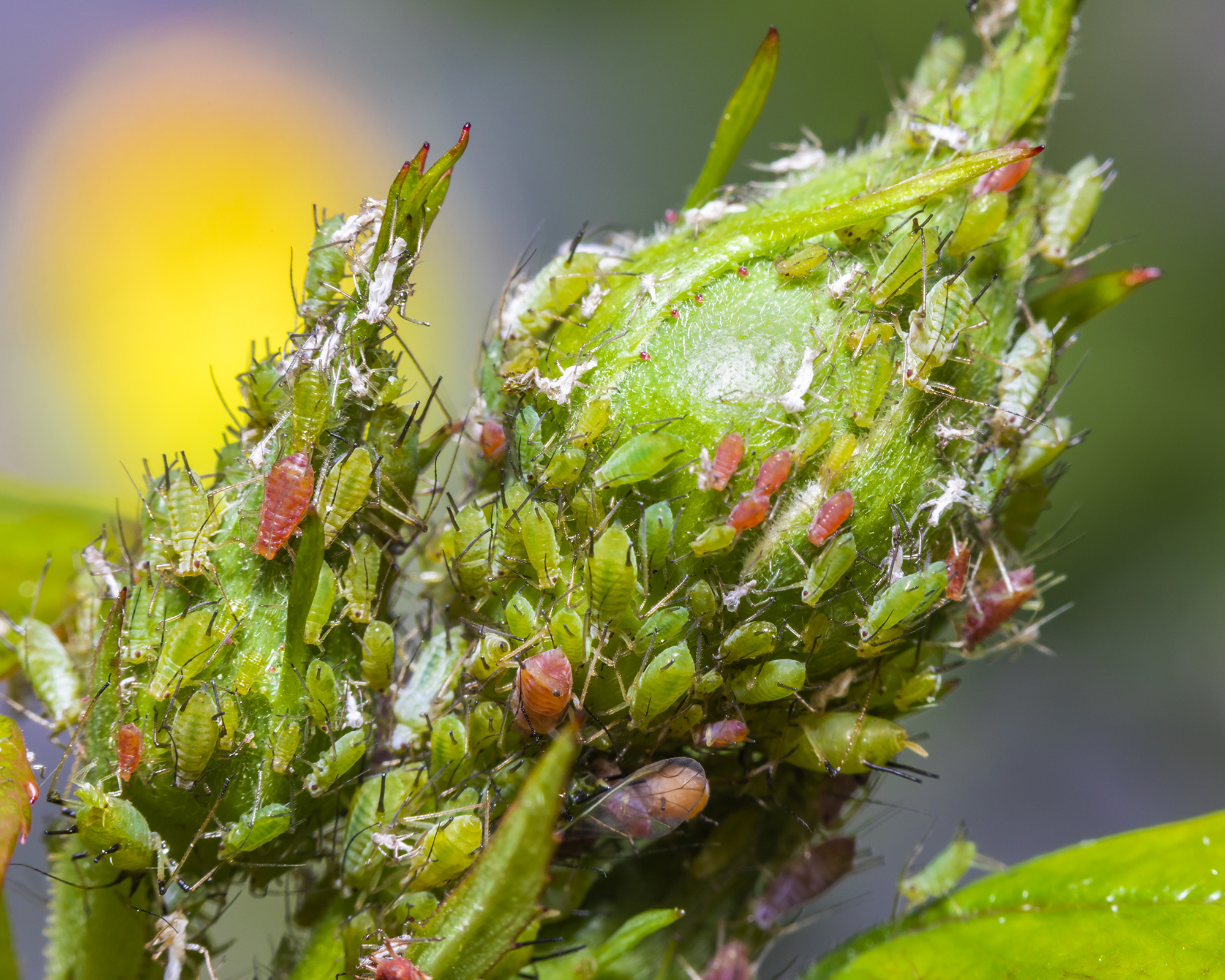
Aphids on roses are common pests – there is even a species called the rose aphid. They are very small insects, either green or pink, that cluster on new growth, including leaves, stems, and buds. They feed on roses by piercing and sucking out sap and can cause damage in large numbers.
You can try to minimize aphid populations by attracting ladybugs to the garden, which are natural predators of aphids. However, this will take time to be effective.
Gardening tips, videos, info and more delivered right to your inbox!
Sign up for the Gardening Know How newsletter today and receive a free copy of our e-book "How to Grow Delicious Tomatoes".
If you see aphids on your roses, use a strong stream of water from the hose to wash them off. Homemade insecticidal soap is also effective if applied directly to aphids.
2. Japanese Beetles
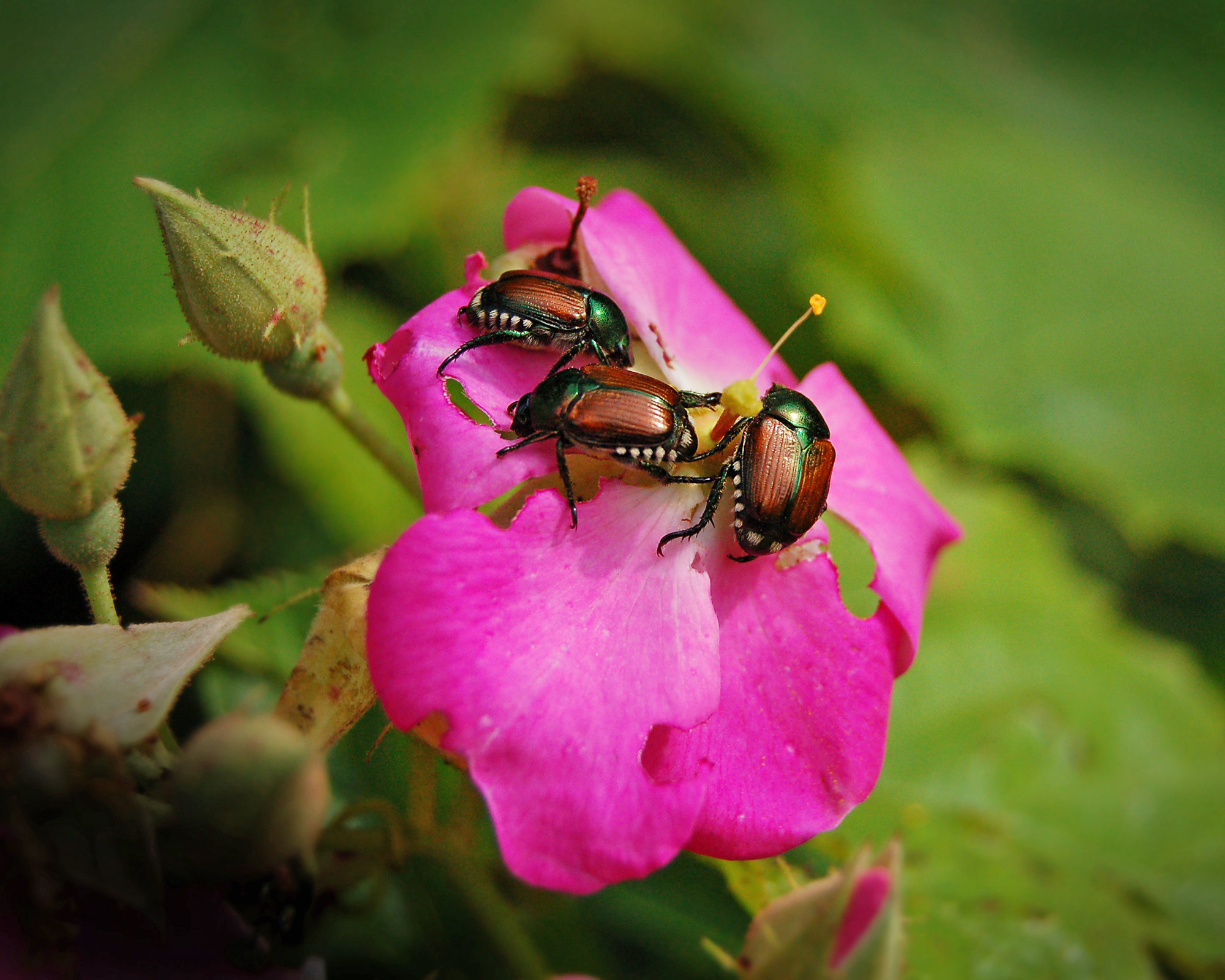
Japanese beetles on roses are easy to spot as they tend to group together in large numbers and have a distinctive green and bronze metallic color. Swarms of beetles will eat leaves on rose bushes and even defoliate whole plants quickly.
Although tedious, the best natural way to get rid of Japanese beetles is to pick them off by hand and drop them into soapy water. You can also treat beetle grubs in the lawn with a product called milky spore that introduces a naturally occurring bacterium to kill them before they can develop into adult beetles.
For long-term protection, include Japanese beetle-resistant plants in your garden, such as catnip, chives, and marigolds.
3. Spider Mites
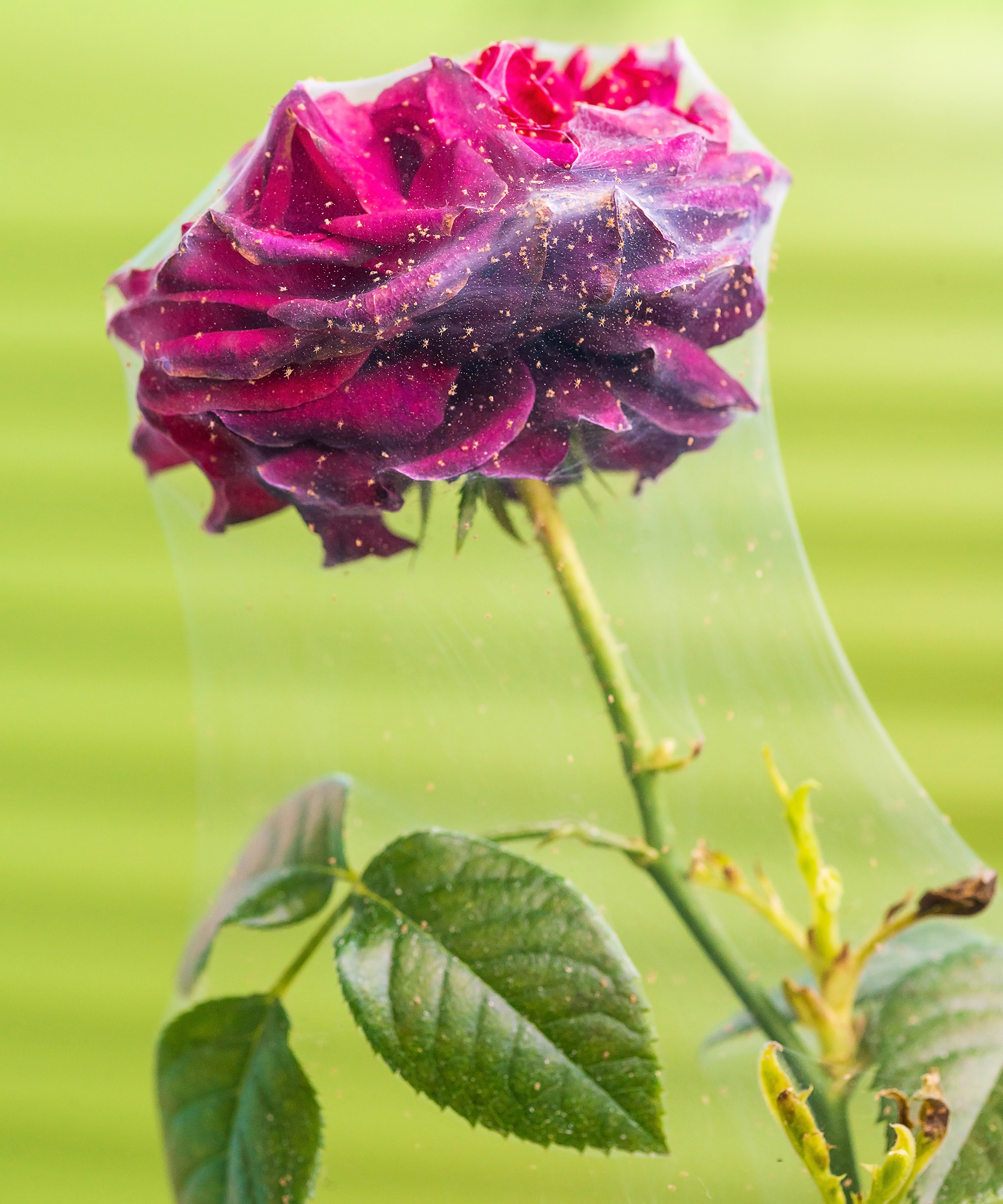
Spider mites on roses are very small and nearly impossible to see without magnification. One way to detect them is to shake a branch over a piece of white paper. Wipe the paper with your hand, and if mites are present, you’ll see red streaks.
Damage caused by mites appears as light spots on leaves and fine webbing on their undersides. However, left untreated, spider mites can seriously impact the health of the shrub, leading to foliage injury, leaf loss, and even plant death.
Use a strong spray of water to dislodge mite eggs from rose bushes. Insecticidal soap and horticultural oil, such as neem oil, can also be effective with regular application.
4. Thrips
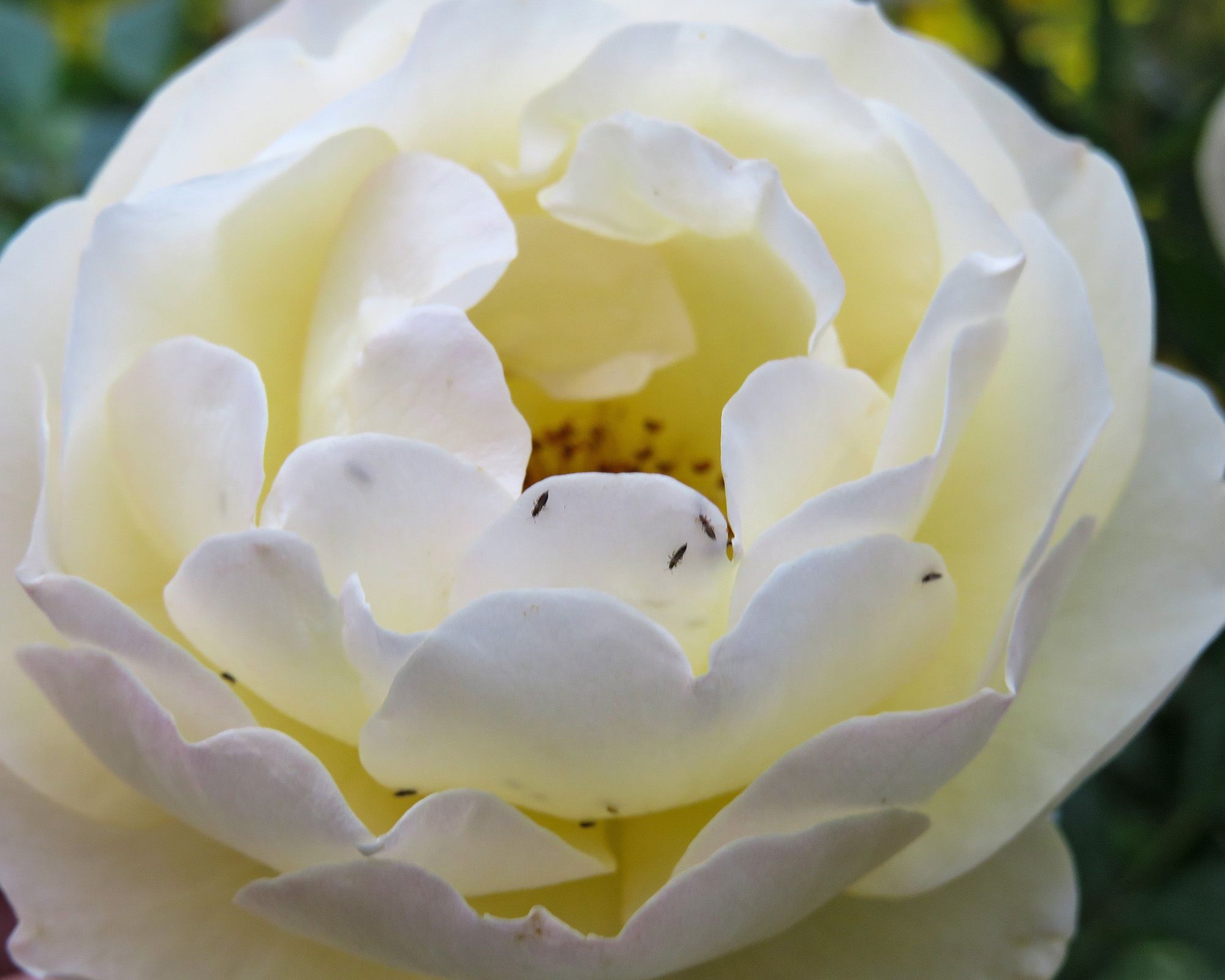
Small flying insects, thrips on roses are hard to see as they live inside the flower buds and blooms.
Look for brown streaks on petals and check inside the flower for small, fast-moving specks. When a plant is infested, typically the flower buds will be deformed and not open.
Chili thrips are a type of thrip that will attack the foliage and can quickly kill the plant if not treated in the early stages.
Thrips thrive in weeds and grasses, so keep the area under rose bushes clear. Remove any damaged buds or flowers, and spray plants with a neem oil treatment.
5. Scale
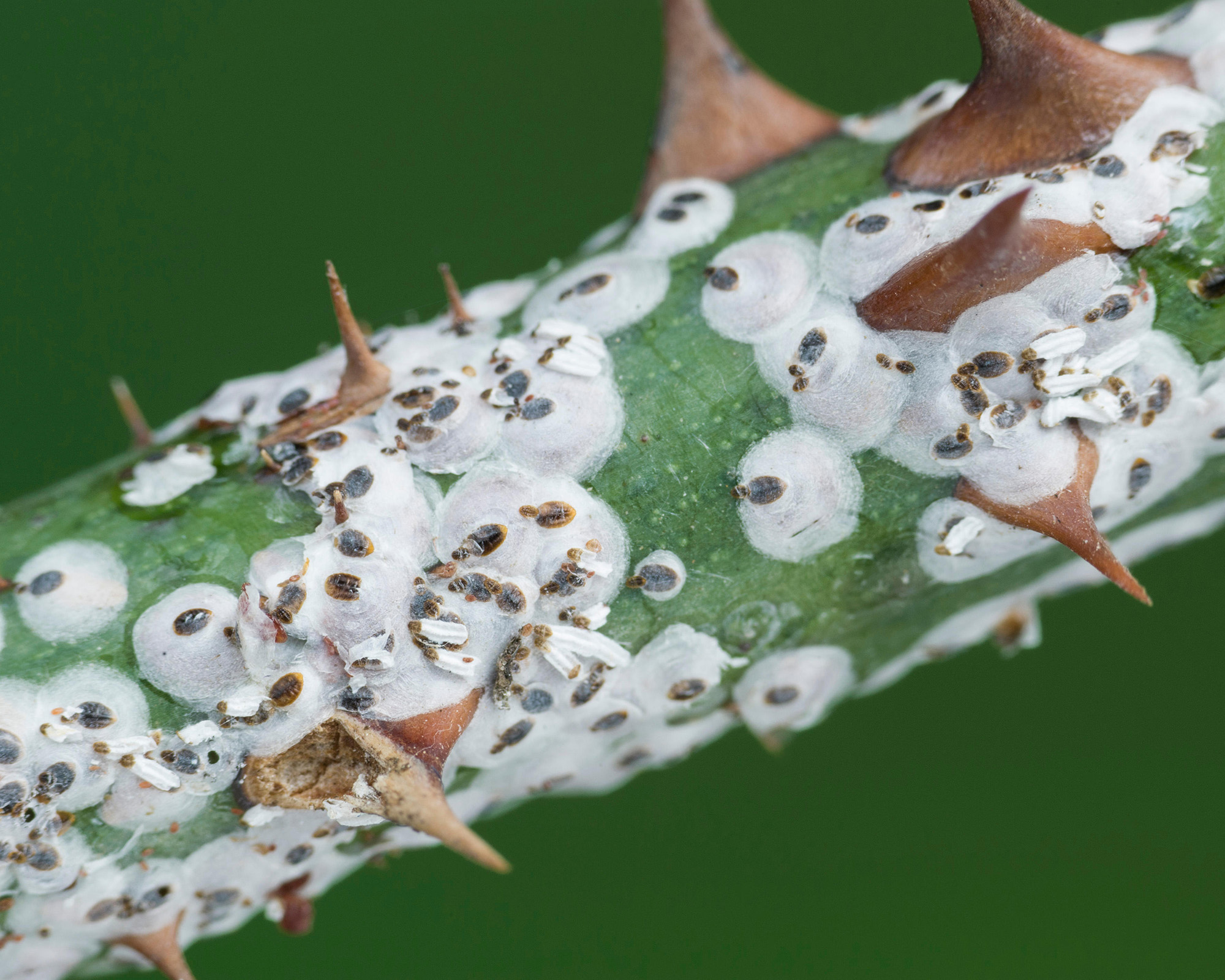
Scale insects affect many plants, including roses. Rose scale insects are small and immobile. You’ll typically see them on the canes, where they produce a protective coating over their bodies that may be waxy, cottony, or crusty.
Roses that are heavily infested with scale will produce little fresh growth, and if left untreated, may eventually die.
Ladybugs and parasitic wasps help control scale populations. If you have a light infestation, remove the scales by hand. You can prune off and destroy any heavily infested canes. Horticultural oils will penetrate the scale’s coating and kill it.
6. Slugs and Snails
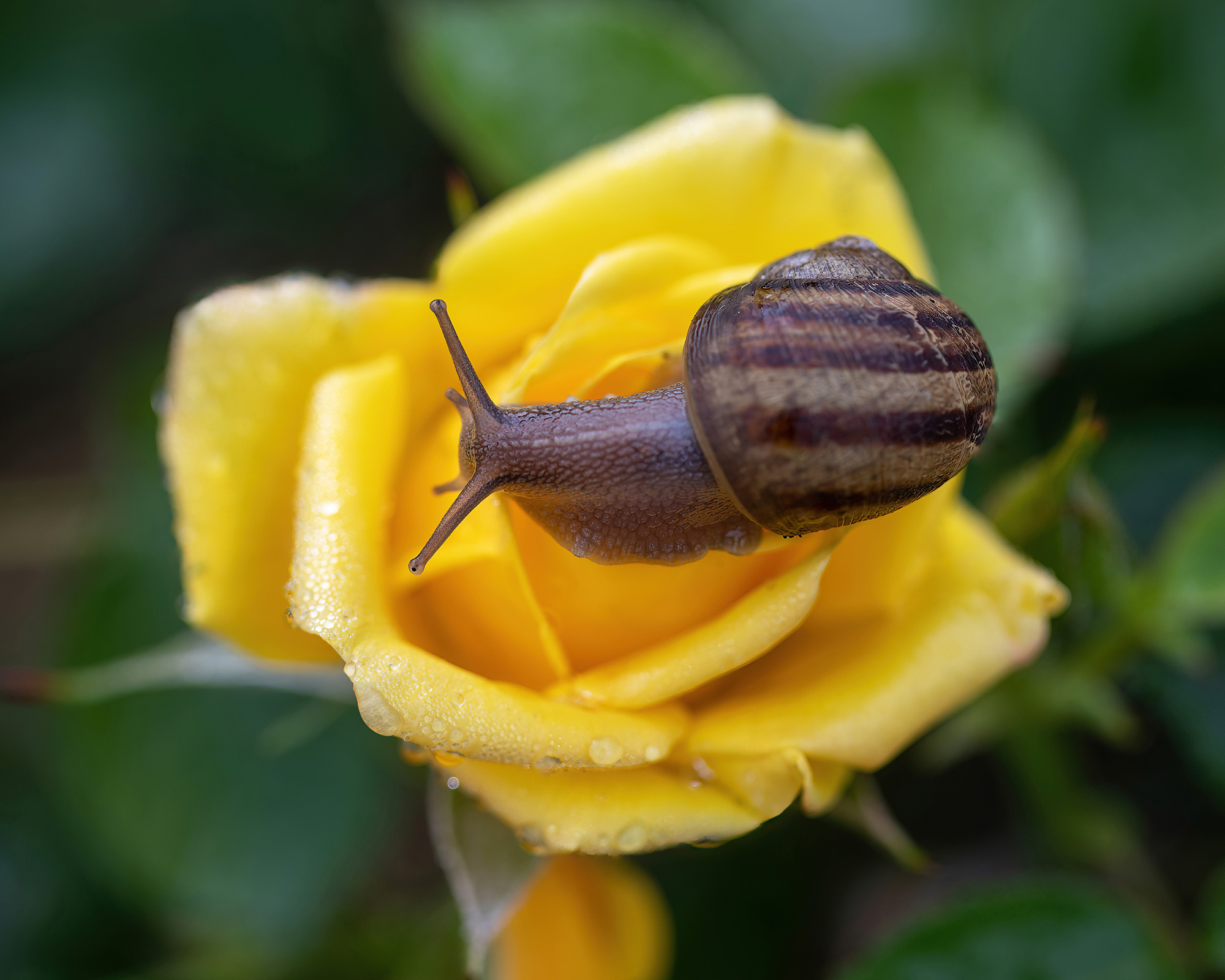
Slugs and snails are responsible for foliage and flower damage to a wide range of plants. They are easy to identify, but you won’t typically catch them in the act of feeding, as they are active at night.
Look for ragged, random holes and slime trails on rose leaves. You can confirm slugs as the culprit if you check on your plants after dark.
Slug bait is effective in reducing populations, but a more natural approach is to use a simple slug trap board or beer trap.
However, if the damage is only minor, consider letting them be to encourage diverse wildlife in the garden. Birds, frogs, toads, and snakes all feed on slugs.
7. Leaf Cutter Bees
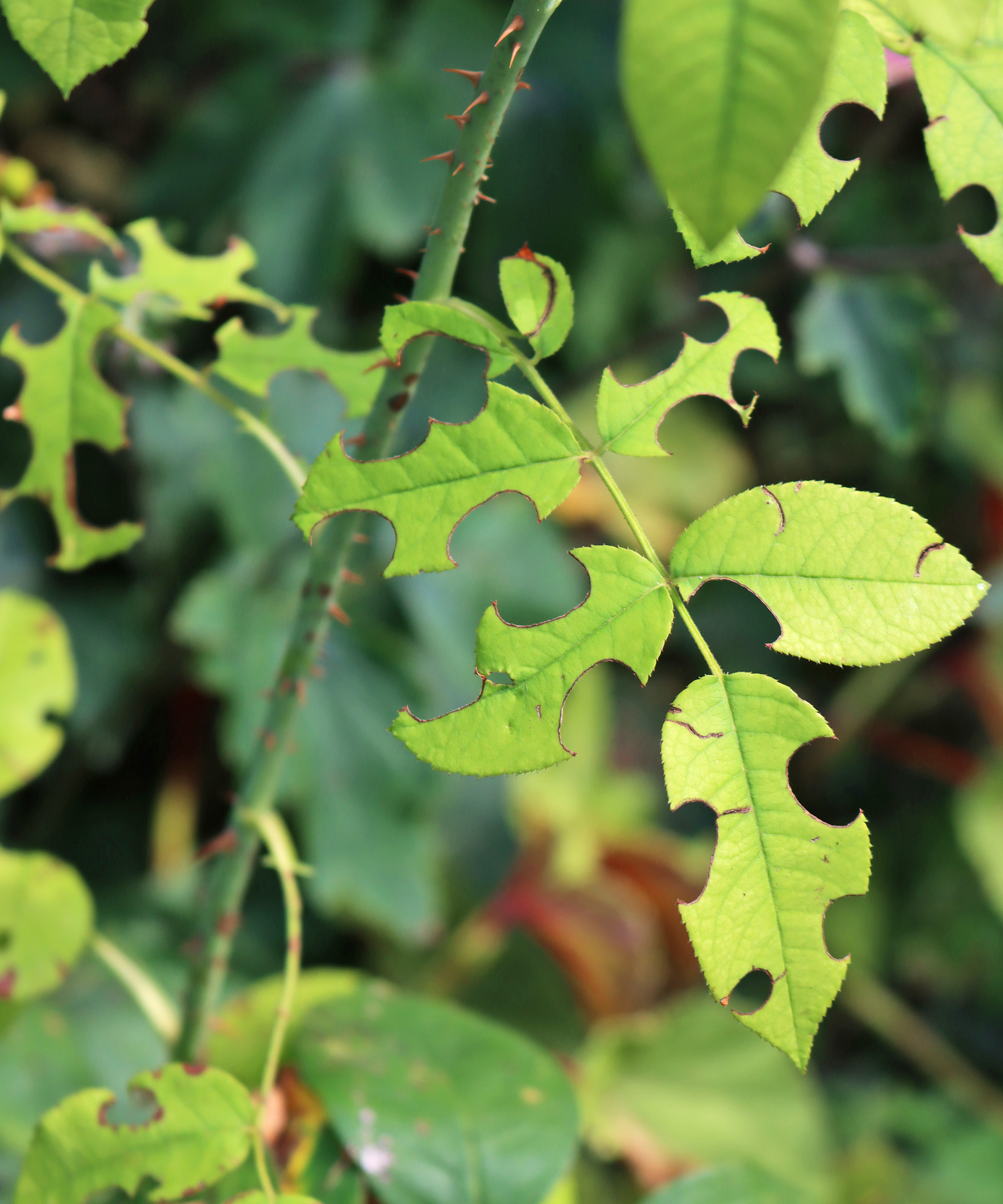
Leaf cutter bees are dark metallic to black in color and about the same size as honeybees. They cut semicircular pieces of leaves to use in their nests. Unlike insects that feed on leaves, these bees leave smooth edges behind.
The good news about leaf cutter bees is that they cause no real damage to plants and are essential pollinators. Since there are no realistic control methods anyway, just remove the leaves that don’t look nice.
8. Rose Sawflies
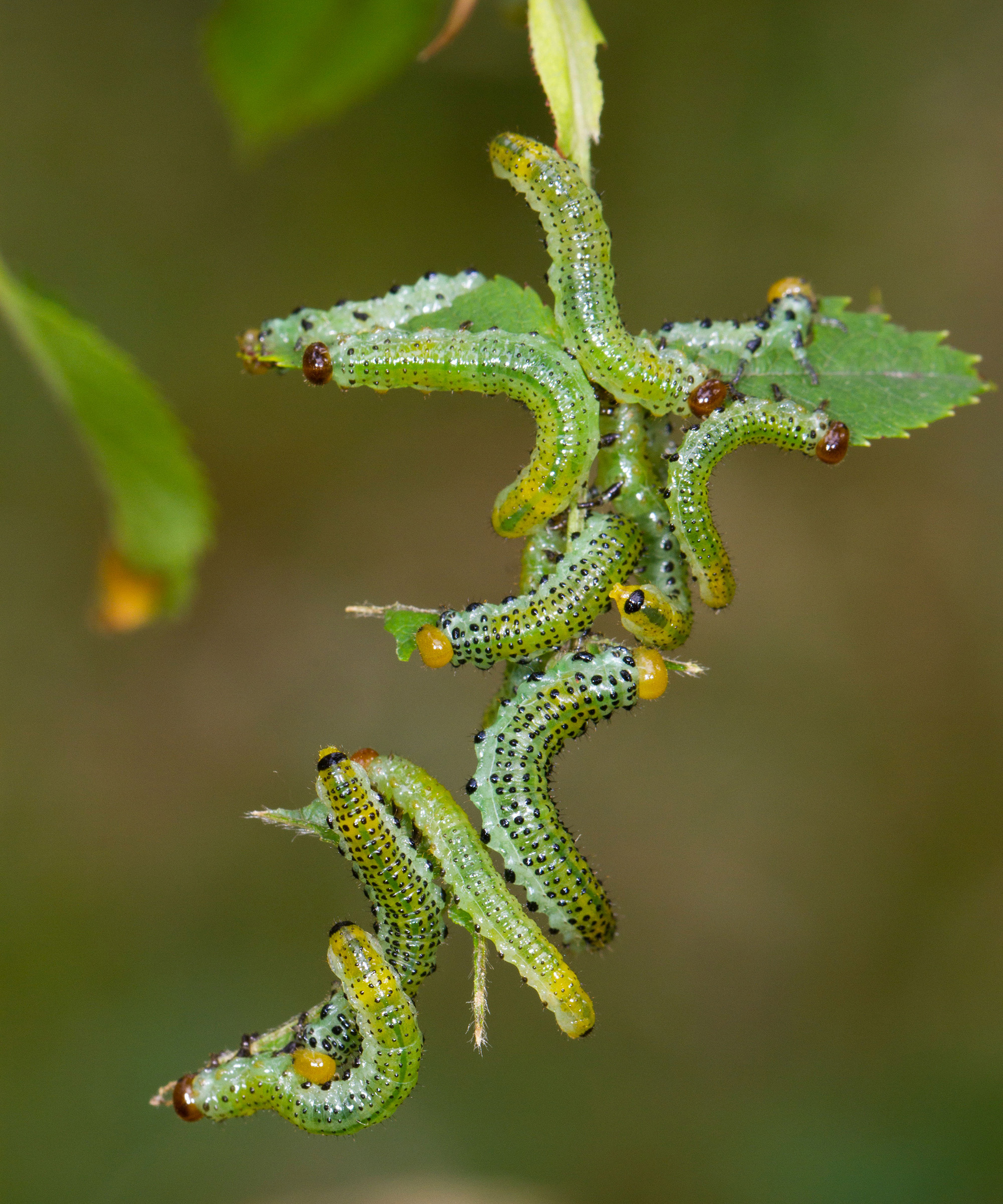
Also called rose slugs, the larvae of sawflies look like small green caterpillars. They are less than a half inch (1.2cm) long. They feed from the undersides of leaves, creating brown spots and making the leaves appear transparent.
If caught early, small infestations won't cause too much damage. However, major infestations are detrimental to the rose's health.
The most effective treatment for sawfly larvae is removal by hand. Drop them into soapy water to kill them. You can also use your hose to spray them off or use an insecticidal soap.
9. Cane Borers
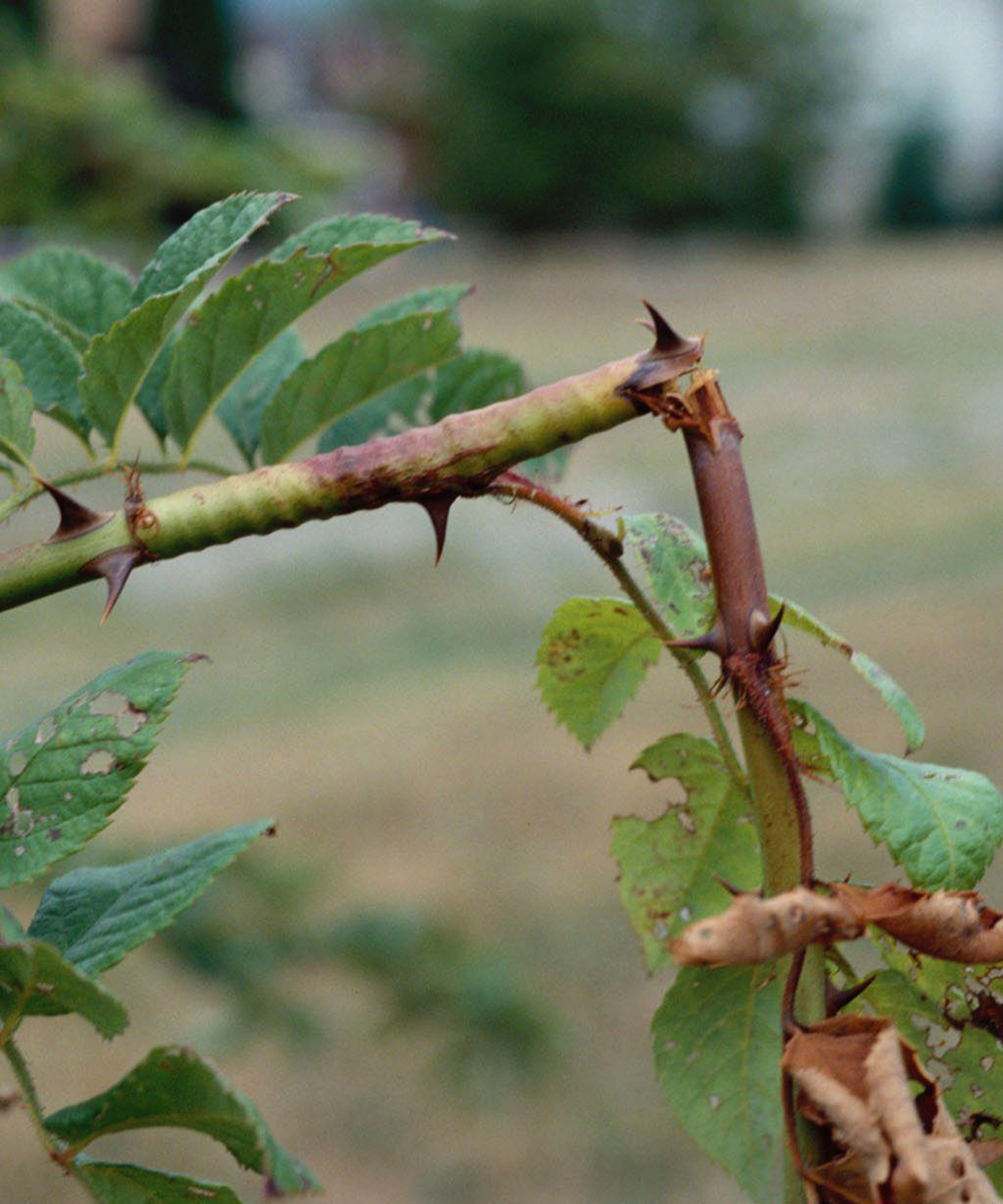
A rose cane borer is the larva of a beetle, wasp, or bee that has laid its eggs inside a rose cane that has been cut. If you have cut canes, you can tell you have a borer by looking for a hole in the middle. It may go all the way to the base of the plant. Canes may also show girdling and break easily.
Shallow boreholes shouldn't cause too much damage to the rose, but deep holes can be detrimental to the plant's health.
Pruning roses early in the season will help cut ends to harden before cane-boring insects become active. Some gardeners like to seal cut canes with a dab of Elmer's multi-purpose glue. If you see a hole, simply remove that cane below the larva’s tunnel.
10. Mammals
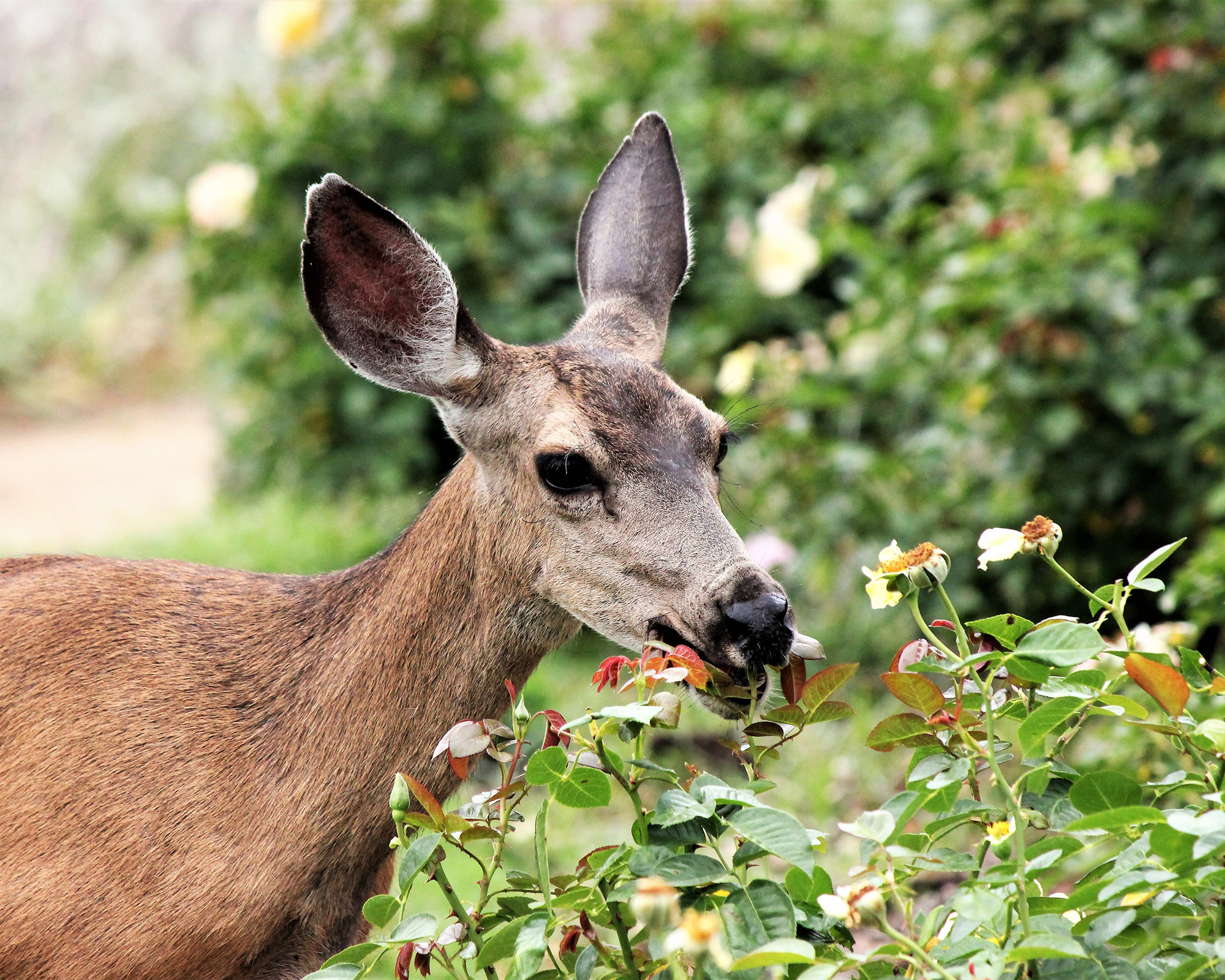
Big pests of rose bushes include herbivores like rabbits and deer. Signs deer have been eating your roses are ragged stems and canes with the tops missing. Rabbit damage is lower to the ground and has smoother edges.
The only surefire way to prevent herbivore damage is with sturdy fencing around your rose bushes. However, sprays can be effective deterrents. Look for natural products designed to deter deer and rabbits. These must be reapplied after rain or watering.

Mary Ellen Ellis has been gardening for over 20 years. With degrees in Chemistry and Biology, Mary Ellen's specialties are flowers, native plants, and herbs.
- Melanie GriffithsSenior Editor
-
 Looking For Plants To Give You The Soft And Fuzzies? Try These 5 Fuzzy Leaf Plant Options
Looking For Plants To Give You The Soft And Fuzzies? Try These 5 Fuzzy Leaf Plant OptionsLovers of texture, drama, silver foliage and tactile plants will adore these special sensory garden additions. These fuzzy leaf plant options will leave you all aglow
By Susan Albert
-
 Get Ready For A Summer Of Hummers! Grow These Full Sun Hummingbird Plants and Flowers
Get Ready For A Summer Of Hummers! Grow These Full Sun Hummingbird Plants and FlowersIf you’re lucky enough to enjoy a sunny backyard, make sure you are maxing out on your pollinator opportunities and grow these full sun hummingbird plants and flowers
By Tonya Barnett